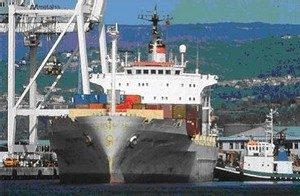The Port Information System is a management tool for quickly assessing the productivity of the port. It provides managers with relevant information that promotes control of port activity. The various components that make it possible, among others:
1. Vessel Management The Terminal and Tide Management module allows you to plan, control and track vessel movements and stays at the port.
2. The management of the port domain. The management of the port domain refers to the management of all the information relating to the zones under the control of the port authority. It aims to:
– Allow better monitoring of the concessions established by the autonomous port;
– Allow better allocation of facilities;
– Guarantee a better exploitation of the port areas;
– Guarantee the availability of the necessary data for the other SIP modules.
3. Merchandise Management. The merchandise management module allows you to plan, control and track the movements and stays of goods at the port.
4. Statistics Management The statistics and miscellaneous module allows you to produce statistics on port management applications at any time. It also allows the production of reports specific to the context of the port.
5. Invoice management and collection Collections management allows you to carry out all settlement and collection transactions of any kind (checks, interbank transfers, transfers or cash).
The purpose of this module is to produce the invoicing elements established within the operational domains (movements, goods) by the port services and other providers in the port area. To meet the diversity of commercial or organizational constraints and calculation methods, this module is fully configurable and adaptable to all situations encountered.
6. The Web Portal The purpose of the Web Portal is to present information and services relating to the activities and the port area, structured, personalized and therefore relevant to the user of the community. It gives the Port Information System the extensive dimension (coverage of information resources of the port), the integrative dimension, the collaborative dimension and the decision-making dimension.
7. Electronic data interchange The purpose of the electronic data interchange system is to improve the efficiency and productivity of container movements in the port. This Internet-based platform promotes the seamless integration of electronic documents between the port’s commercial partners (administrative structures, banking institutions and port operators) and other interested organizations. It fits well into the establishment of a single window.
